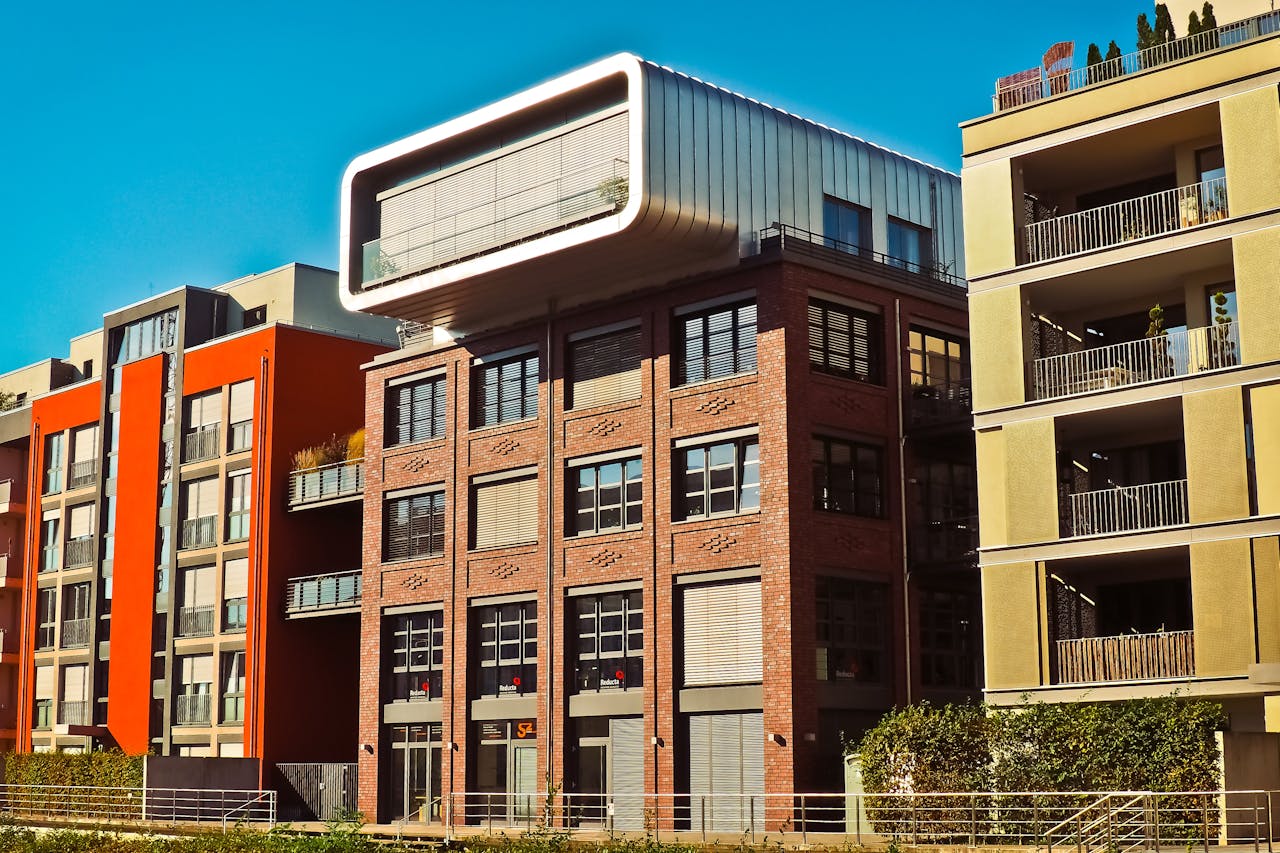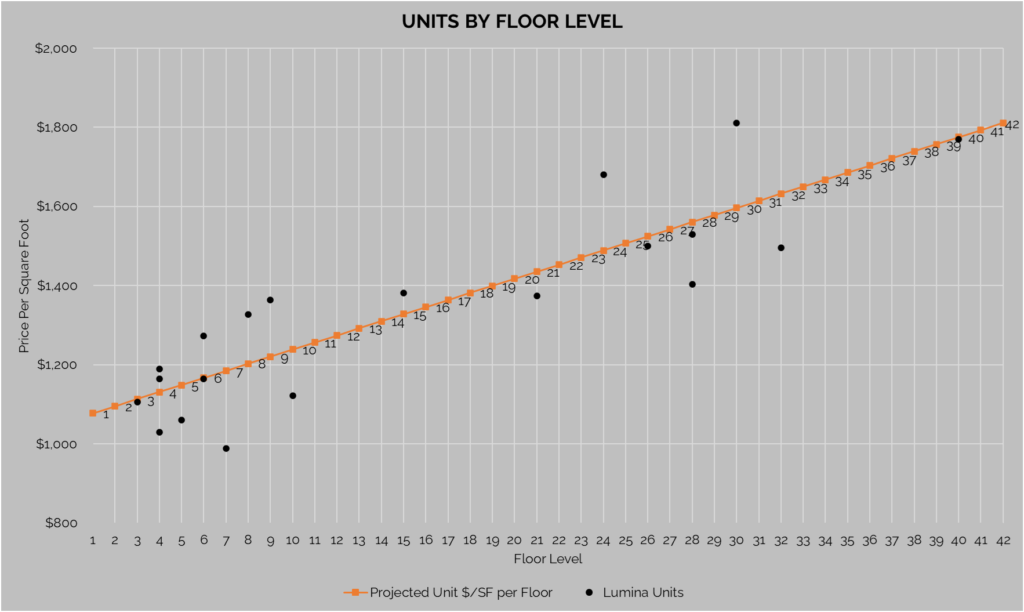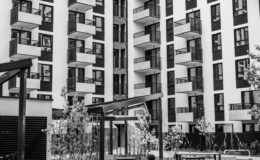In this month’s Spotlight we continued our series on looking into price premiums. Whereas last month we answered the question, “How much is a view worth?”, this month we dove into floor level premiums. How much are buyers willing to
pay to live on a particular floor?
There are inherent advantages and disadvantages to certain floor levels:
Advantages of a Higher Floor
- Increased sense of privacy and security
- Quieter (less noise pollution)
- Better views and access to natural light
Disadvantages of a Higher Floor
- Accessibility (rely on elevators)
- Limited emergency evacuations options
- Higher utility costs in summer (increased light exposure)
While many of these points are intuitive, we also sought to quantify the marginal premium buyers are willing to pay for each floor level in a high rise building. In our analysis, we surveyed Lumina, a 655-unit, multi-tower development in San Francisco’s Rincon Hill neighborhood. The project was fully completed in 2016. In order to quantify a floor level premium, we ran a linear regression to model the relationship between floor level and price per square foot.
The chart on the previous page illustrates each unit, represented by black circles, that has closed between January 2022 and January 2023. The orange line illustrates the regression output for a sample unit on each of the 42 floors at the project (tallest tower is 42-stories). The regression output suggests a premium of about 1.3% per floor. We also ran a multi- linear regression model incorporating unit size into the analysis. Our findings were the same: about a 1.3% increase in price per square foot per floor.
In addition to Lumina, we ran the same regression model for Azzurra, the 450-unit, 19-story, Marina del Rey condominium building surveyed in last month’s Spotlight. Once again, we found a similar premium per floor. We consistently find that the floor-to-floor premium lands somewhere between 1% and 2%, which is why pricing models created by The Kennelly Group typically use a floor premium input within that range. The exact percentage selected depends on many factors, but generally speaking, short buildings show a higher per floor premium than tall buildings.
While floor level is largely a buyer preference, and many may even enjoy the convenience and accessibility of low and ground floor units, there is undoubtably a distinct, quantifiable premium for height in vertical living. Along with factors such as unit size, view, location within a building, and features/finishes, floor level should be an important factor considered when pricing real estate.
All information is from sources deemed reliable but no guarantee is made as to its accuracy. All material presented herein is intended for informational purposes only and is subject to human errors, omissions, changes or withdrawals without notice.







